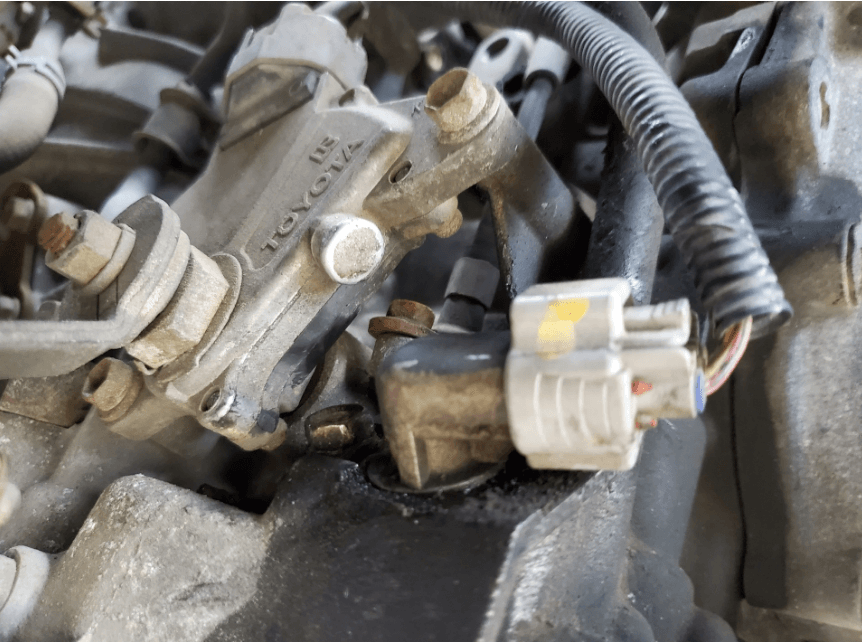Transmission Speed Sensor Location: A Comprehensive Guide

The transmission speed sensor is a crucial component of modern vehicles that plays a vital role in ensuring smooth and efficient operation. On the transmission speed sensor location, and its significance in the overall functioning of a car. By understanding the importance of this sensor and its location, readers will gain valuable insights into diagnosing and resolving potential issues related to the transmission system.
Understanding the Transmission Speed Sensor
The transmission speed sensor, also known as the output shaft speed (OSS) sensor, is an electronic output shaft of the transmission. It provides crucial data to the vehicle’s engine control module (ECM), enabling it to determine the appropriate gear shifting points and optimize the overall performance of the transmission.
Importance of the Transmission Speed Sensor
The transmission speed sensor plays a pivotal role in various aspects of a vehicle’s operation. Its primary functions include:
- Gear Shifting: By monitoring the speed of the output shaft, the transmission speed sensor assists in determining the optimal timing for gear shifts, ensuring smooth acceleration and deceleration.
- Speedometer Accuracy: The sensor provides real-time data on the vehicle’s speed, enabling the speedometer to display accurate readings to the driver.
- Transmission Control: The ECM utilizes information from the speed sensor to regulate the transmission’s hydraulic pressure, clutch engagement, and torque converter lock-up, maximizing fuel efficiency and performance.
Identifying the Transmission Speed Sensor Location
The transmission speed sensor location varies depending on the vehicle’s make, model, and transmission type. It is usually located on the transmission housing, near the output shaft. However, it’s important to consult the vehicle’s service manual or seek professional assistance to accurately identify the sensor’s exact location for a specific vehicle.
Common Symptoms of a Faulty Transmission Speed Sensor
A malfunctioning transmission speed sensor can lead to various issues within the transmission system. Some common symptoms of a faulty sensor include:
- Inaccurate Speedometer Readings: The speedometer may display incorrect or erratic readings, indicating a problem with the sensor.
- Delayed or Harsh Shifting: A faulty speed sensor can cause delayed or abrupt gear shifts, resulting in jerky acceleration or deceleration.
- Stalling or Loss of Power: A malfunctioning sensor may disrupt the transmission control signals, leading to stalling or loss of power while driving.
- Overheating Transmission: In some cases, a faulty speed sensor can cause the transmission to overheat due to improper shifting patterns.
Steps to Locate and Replace a Faulty Transmission Speed Sensor
If you suspect a faulty transmission speed sensor, follow these general steps to locate and replace it:
- Consult the Service Manual: Refer to the vehicle’s service manual for specific instructions on locating the speed sensor.
- Raise the Vehicle: Safely use jack stands or a hydraulic lift to access the transmission area.
- Locate the Speed Sensor: Identify the sensor’s location based on the information provided in the service manual or consult a professional mechanic.
- Disconnect and Remove the Sensor: Disconnect the electrical connector attached to the sensor and remove it using the appropriate tools.
- Install the New Sensor: Install the new speed sensor in the same location and secure it properly.
- Reconnect the Electrical Connector: Ensure that the electrical connector is securely attached to the new sensor.
- Lower the Vehicle: Carefully lower the vehicle and test the transmission to ensure proper functionality.
It’s important to note that these steps provide a general guideline, and specific vehicle models may have variations. Consulting the vehicle’s service manual or seeking professional help is highly recommended for accurate diagnosis and repair.
Maintenance Tips for Optimal Transmission Speed Sensor Performance
To maintain the optimal performance of the transmission speed sensor, consider the following tips:
- Regular Inspection: Include the transmission speed sensor in your routine vehicle inspections to identify any signs of damage or wear.
- Keep the Sensor Clean: Clean the sensor periodically using a gentle automotive cleaner to remove any dirt or debris that may affect its functionality.
- Check Wiring and Connectors: Inspect the sensor’s. Repair or replace them if necessary.
- Follow Recommended Service Intervals: Adhere to the manufacturer’s recommended service intervals for the transmission system, including fluid changes and filter replacements.
- Seek Professional Help: If you encounter persistent issues with the transmission or suspect a faulty speed sensor, consult a qualified mechanic for a thorough diagnosis and repair. Read more…
Frequently Asked Questions (FAQs)
- Q: Can a faulty transmission speed sensor cause the check engine light to illuminate?
- A: A malfunctioning speed sensor can trigger the check engine light as it disrupts the transmission control signals.
- Q: How much does it cost to replace a transmission speed sensor?
- A: The cost of replacing a transmission speed accurate cost estimates.
- Q: Are there any DIY methods to diagnose a faulty transmission speed sensor?
- A: While basic inspections and troubleshooting can be performed by DIY enthusiasts, diagnosing a faulty speed sensor often requires specialized diagnostic tools and expertise.
- Q: Can a faulty transmission speed sensor lead to transmission failure?
- A: A faulty speed sensor can sometimes contribute to transmission issues if left unaddressed.
- Q: How long does it take to replace a transmission speed sensor?
- A: The time required to replace a transmission speed sensor may vary based on the vehicle’s make, model, and the accessibility of the sensor.
Conclusion
The transmission speed sensor location is a critical component that ensures the smooth operation of a vehicle’s transmission system. Understanding its location, importance, and potential failure symptoms empowers vehicle owners to identify and address issues promptly. By following proper maintenance practices and seeking professional help, individuals can optimize the performance and longevity of their vehicle’s transmission speed sensor.




